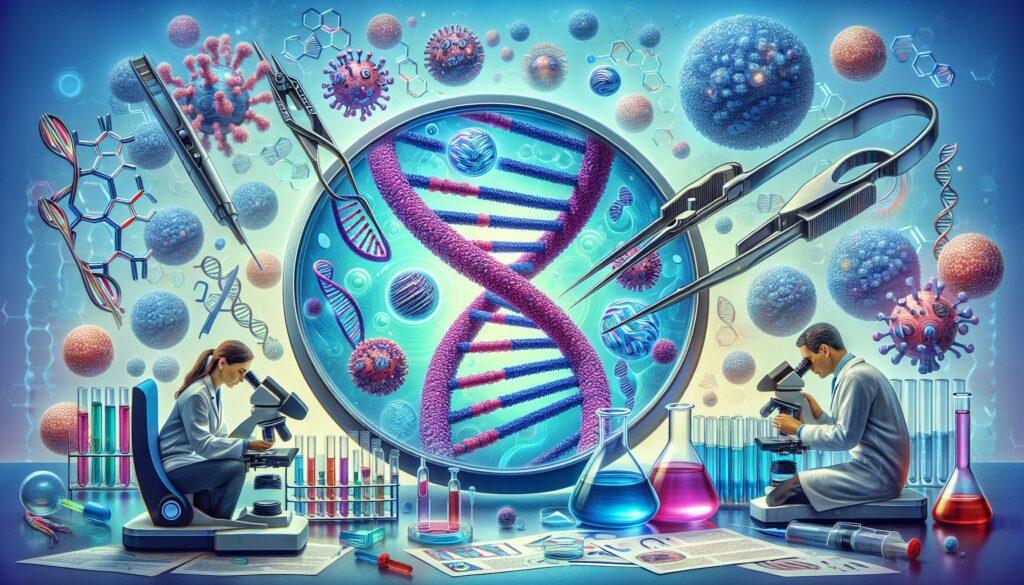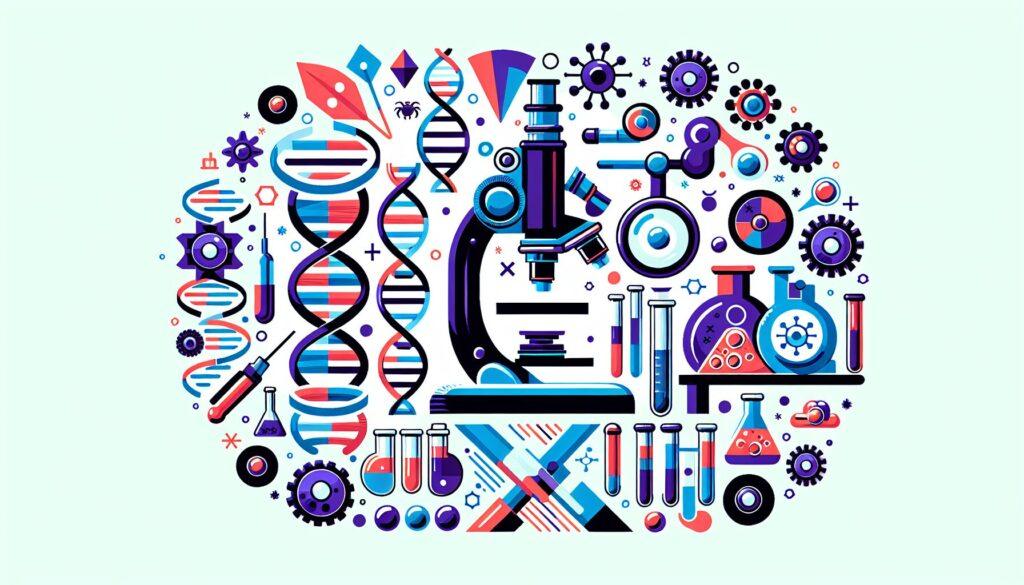Tissue Engineering and Regenerative Medicine
Tissue engineering and regenerative medicine represent the forefront of medical innovation, aiming to repair or replace damaged tissues and organs through the integration of biological, chemical, and engineering principles.
This interdisciplinary field combines the use of scaffolds, cells, and biologically active molecules to develop functional tissues that can restore, maintain, or improve damaged biological structures.
As researchers continue to unravel the complexities of human tissue, advancements in biomaterials, stem cell technology, and biofabrication methods are paving the way for groundbreaking treatments that could revolutionize healthcare and patient outcomes.
Welcome, curious friend! Today, we’re exploring a fascinating topic that seems straight out of science fiction: tissue engineering and regenerative medicine. Imagine a world where we can repair or replace damaged tissues and organs using the body’s building blocks. It’s not just a dream—it’s happening today!
What is tissue engineering?
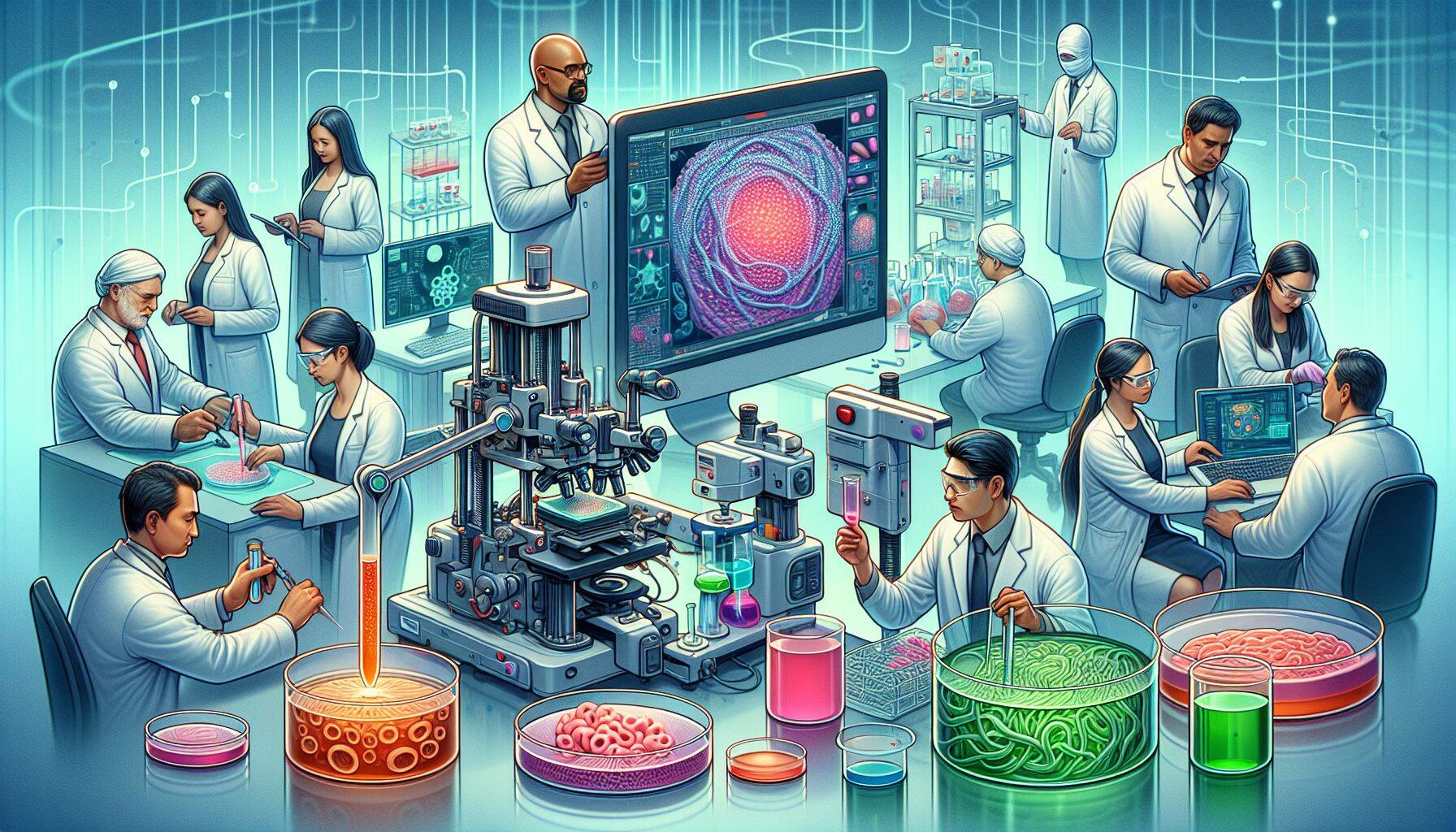
Tissue engineering is an interdisciplinary field that combines principles from biology, chemistry, engineering, and medicine to create biological substitutes that can restore, maintain, or improve tissue function.
This innovative approach often involves using scaffolds—materials that act as templates for tissue growth—along with cells and biologically active molecules.
By meticulously designing these components, scientists can cultivate tissues in a lab that, once implanted, can integrate with a patient’s body to heal injuries or even counteract degenerative diseases.
What is tissue engineering? Imagine it as a cutting-edge craft where scientists combine cells and specialized materials to create new tissues. It blends biology, engineering, and a touch of magic. The goal? To replace or repair damaged tissues in the body.
Fun Fact Box:
Did You Know? Tissue engineering concepts emerged in the 1980s, but significant breakthroughs have only been made in the past two decades!
How Does It Work?
Tissue engineering works by using a scaffold – a structure that acts as a template for tissue growth. This scaffold is typically made from biodegradable materials that can be easily absorbed by the body over time. Stem cells, which have the unique ability to develop into different types of cells, are then placed onto this scaffold.
They are nurtured with growth factors that encourage them to proliferate and differentiate into the desired tissue. As the cells grow and organize, they eventually form new tissue that integrates with the body’s existing cells, effectively repairing or replacing the damaged area. Here’s an easy breakdown:
1: Cells: 2: Scaffold: To guide the growth and organization of these cells, a scaffold is often used. This structure is designed to mimic the extracellular matrix—a complex network of proteins and other molecules that provide support to cells in the body.
The scaffold not only provides a template for tissue development but also can deliver growth factors and other necessary substances to promote proper cell differentiation and maturation. Scientists begin with cells taken from the affected person, which makes the tissues suitable and reduces the possibility of rejection.
2: Scaffolds: Scaffolds serve as the structural framework for tissue engineering, providing a three-dimensional space where cells can attach, grow, and organize into functioning tissues.
These can be made from a variety of biocompatible materials, including natural polymers like collagen or synthetic ones such as polylactic acid, and are often designed to degrade harmlessly as the new tissue forms.
By mimicking the physical properties of the native extracellular matrix, scaffolds not only support the mechanical structure of the developing tissue but also influence cell behavior and function, which is critical for the successful integration of the engineered tissues into the human body. These are tiny frameworks that inform the cells to develop in the proper form.
3: Growth Factors: Growth factors play a pivotal role in tissue engineering, acting as essential signals that regulate cell division, migration, and differentiation.
By mimicking the natural biological cues found within the body, these proteins can be introduced into the scaffold to guide the cells towards forming the desired tissue structure and function.
The careful selection and delivery of these growth factors are crucial for the maturation of tissues and their eventual success in healing or replacing damaged areas within the body. These are particular molecules that assist cells in developing and becoming the proper sort of tissue.
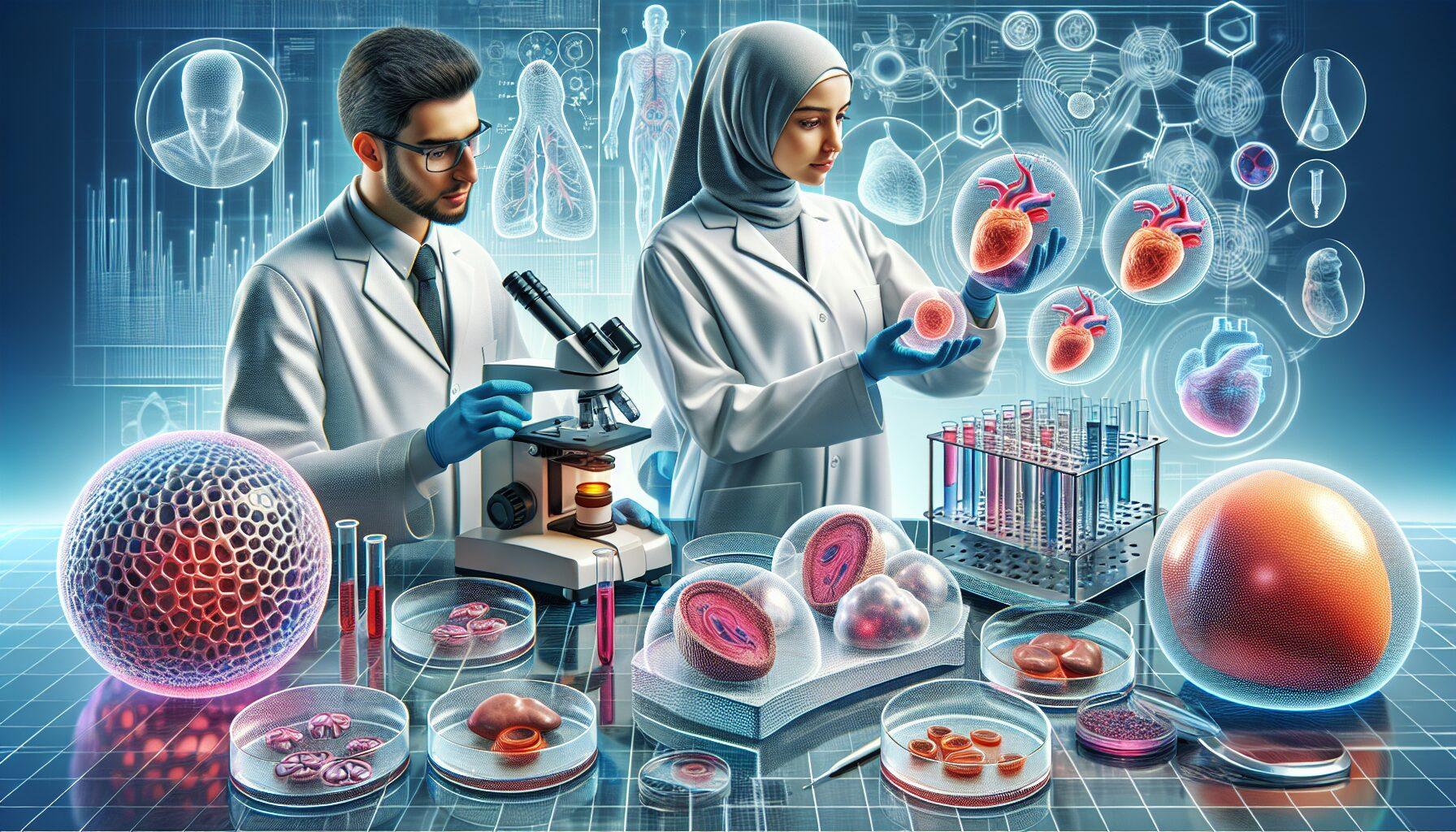
Real-World Example:
In the realm of regenerative medicine, AI-driven personalization has emerged as a transformative force, tailoring these growth factor therapies to individual patient needs.
By leveraging vast datasets and machine learning algorithms, AI can predict the optimal combination and concentration of growth factors for each unique tissue engineering application.
This precision not only enhances the efficacy of treatments but also minimizes potential side effects, ensuring a more successful integration of the regenerated tissues with the patient’s own biological systems.
In 2008, a young woman underwent a successful transplant of a lab-grown windpipe, representing one of the early triumphs of tissue engineering in vital organ transplants.
The Amazing World of Regenerative Medicine
Building upon these groundbreaking successes, the field of regenerative medicine has continued to make remarkable strides. With advancements in stem cell research and 3D bioprinting technology, scientists are now able to create more complex tissues and organs with the potential to significantly reduce transplant waiting lists and the risk of organ rejection.
This progress not only heralds a new era in medical treatments but also offers hope to millions of patients worldwide who are in dire need of life-saving organ transplants.
Regenerative medication is like tissue engineering’s cooler sibling. It focuses on therapeutic the physique by boosting its pure capability to restore itself. Consider it as giving your physique a nudge to do what it already knows how to do.
Case Study Box:
Building on the marvels of regenerative medicine, scientists are delving deeper into the realm of personalized medicine, where treatments are tailored to the individual’s genetic makeup.
This bespoke approach not only enhances the body’s intrinsic healing capabilities but also minimizes the risk of rejection and adverse effects that can occur with one-size-fits-all therapies.
By harnessing the power of AI and machine learning, researchers are able to predict more accurately which treatments will be most effective for each person, ushering in a new era of healthcare that is as unique as the patients themselves.
In a groundbreaking case, scientists helped a person regain his eyesight utilizing stem cells—a key participant in regenerative medication.
Why It Matters
The implications of AI personalization in healthcare are profound, extending far beyond the realm of individual treatment plans. By harnessing the predictive power of artificial intelligence, medical professionals can anticipate health issues before they arise, offering preventative measures tailored to the genetic makeup and lifestyle of each patient.
This not only revolutionizes patient care but also has the potential to significantly reduce healthcare costs by minimizing the need for more invasive and expensive interventions down the line.
You might be wondering, “Why should I care about this?” Well, tissue engineering and regenerative medication might revolutionize healthcare. From treating accidents to curing ailments, the potential is large. Imagine folks with broken hearts or livers getting new tissues to help them recuperate totally!
Tips for Staying Updated
1: Stay Updated with Medical Journals: Attend Conferences and Seminars: The field of tissue engineering and regenerative medicine is ever-evolving, with breakthroughs and innovations being shared frequently at professional gatherings.
By attending relevant conferences, seminars, and symposiums, you can hear firsthand from leading researchers and practitioners about the latest advancements.
These events also provide a unique opportunity to network with peers, discuss new ideas, and potentially collaborate on future projects. Regularly check publications such as Frontiers in Bioengineering and Biotechnology for the latest research findings.
2: Join online forums: 3: Engage with social media groups: Social media platforms like LinkedIn, Twitter, and Facebook have specialized groups dedicated to bioengineering and biotechnology.
By joining these groups, you can stay informed about the latest industry trends, share your insights, and ask questions to a broader community of experts.
Engaging in these online discussions can lead to valuable connections and may even open doors to new collaborations or career opportunities. Engage with communities that debate improvements in healthcare.
3: Attend webinars: Explore Cutting-Edge Platforms: To truly understand the potential and nuances of AI personalization in healthcare, familiarize yourself with the latest platforms and technologies. Many companies offer demos or trial periods for their products, allowing you to experience firsthand how AI can tailor healthcare experiences to individual needs.
By immersing yourself in the technology, you can gain a deeper appreciation for its capabilities and limitations, and how it may be integrated into current healthcare systems to improve patient outcomes. Many establishments provide free webinars on cutting-edge medical applied sciences.
Interactive Element Suggestion:
Take a quick quiz to check your data on tissue engineering! How much have you learned concerning the future of medication?
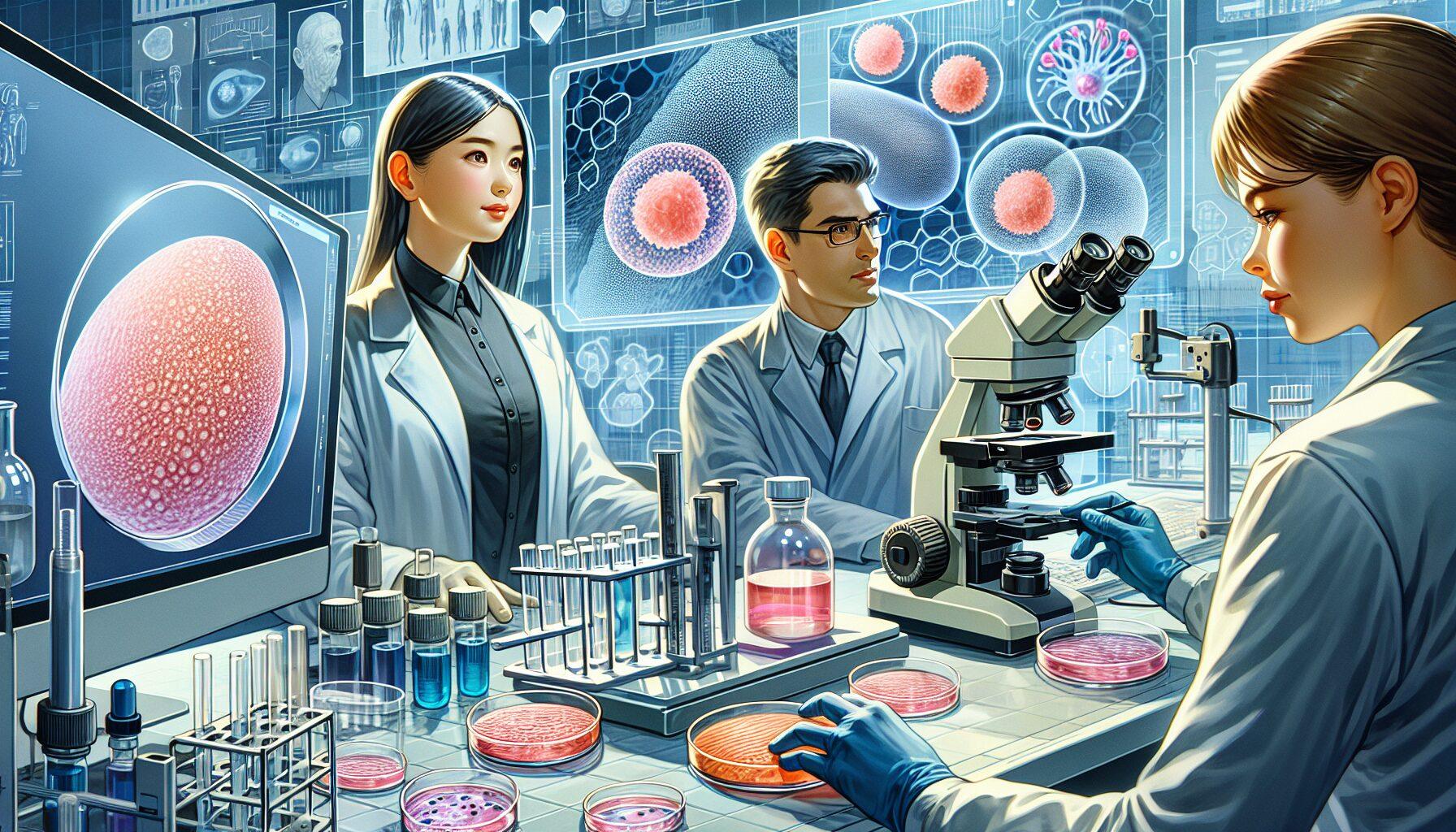
Call to Action
In the realm of healthcare, AI personalization is not just a futuristic concept but a present reality that is revolutionizing the patient experience. From tailored treatment plans to personalized medication regimens, artificial intelligence is enabling medical professionals to cater to the unique needs of each individual.
This level of customization ensures that patients receive the most effective care, designed to fit their specific health profiles and improve their quality of life. As we continue to harness the power of AI, the potential for even more precise and patient-centric healthcare solutions becomes increasingly tangible.
Curious to see how these developments would possibly influence you or your family members? Stay knowledgeable and discover how regenerative medication might be a game-changer for future healthcare options!
External Links:
For complete particulars, discover the next useful resource: Frontiers in Bioengineering and Biotechnology.
Learn more about the science behind stem cells here.
Check out the information on longer-term healthcare know-how here.
Remember, the world of science is all the time evolving, so keep your curiosity alive and keep knowledgeable about these thrilling developments!

